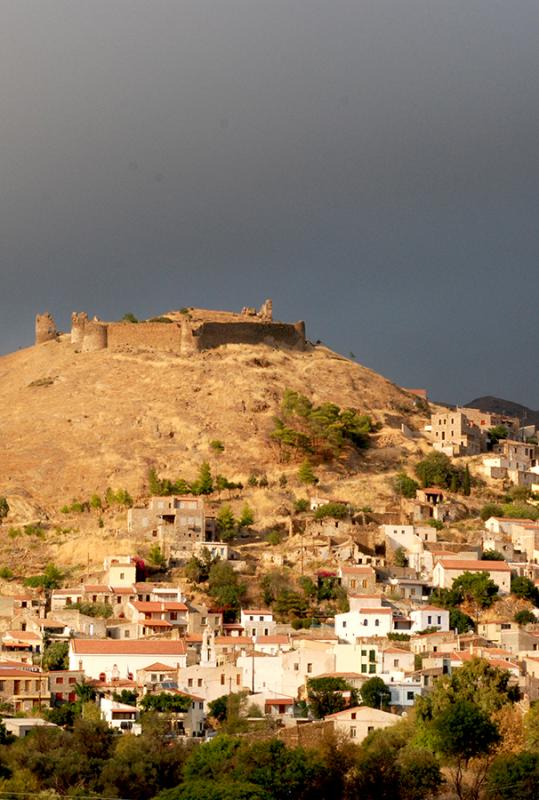It is said that Homer arrived at Volissos, the largest village in northern Chios and capital of the Municipality of Amani in order to teach the children of a rich man of the land. The top of the village, which preserves its ancient name to this day, is dominated by the Byzantine castle. Tradition says that it was constructed in the 6th century by General Belisarius, a famed military man and partner of emperor Justinian. However, researchers date it to the 11th century. During the 15th century, the Genovese conquerors rebuilt and gave the castle its contemporary form. In 1420, Cristoforo Buondelmonti marked the tomb of Homer in the broader area of Volissos on the map of Chios. In 1549, the French monk and traveler André Thevet visited the island and mentioned that Homer’s tomb lay close to the castle. The castle has a trapezoid ground plan, 6 circular towers around its perimeter and tunnels linking it to the coast.
11. Volissos
Travelers and scholars regularly visited Volissos in order to find and visit Homer’s tomb.
Stories
The secret of the castle
The poet’s nectar
The travelers had the ardent desire to find and visit the birthplace of Homer, his school and tomb. Some believed that he was born in the area producing the Ariousios wine, a wine renowned since antiquity. The Ariousia land “having the best wine in Greece”, according to geographer Strabo, stretches between Pelinaio Mountain and Melaina akra, meaning northwest Chios, with the mountainous range of Amani and the picturesque villages, Volissos being the first among them. 15th travelers place the ‘Omiros’ settlement at “Apanomeria’’ meaning northern Chios – there one could see the vineyards producing the so-called Homeric wine or Homeric nectar. The ariousios wine from Chios was deemed the most expensive wine and it is now considered to have been the first red wine. The people of Chios would offer the travelers this fine wine and they would not neglect stressing the fact that it was the same wine that Homer used to drink.
Papatrechas and the edition of the Iliad
Wishing to honor this area brimming with Homeric traditions, Adamantios Korais named the first edition of rhapsodies 1 to 4 as ‘Volissian’. In 1811 the 1st Rhapsody was published in Paris, to be followed by the others. In the prologue of Rhapsody 1 and 2 published in 1817, Korais presents a fictional character called Papatrechas. He is a poor priest from Chios who, although uneducated, shares the same vision with Korais: publishing ancient works of literature in order to enlighten the Greeks. So, Korais writes that when he mentioned to Papatrechas that Homer came from the same village, Papatrechas was excited and wanted, despite his poverty, to contribute financially to the publication of the Homeric epics. He was so proud to have lived in the same village as the poet that, when reading Homer, he would say that he read his fellow man from Volissos
Powered by Clio Muse Tours
